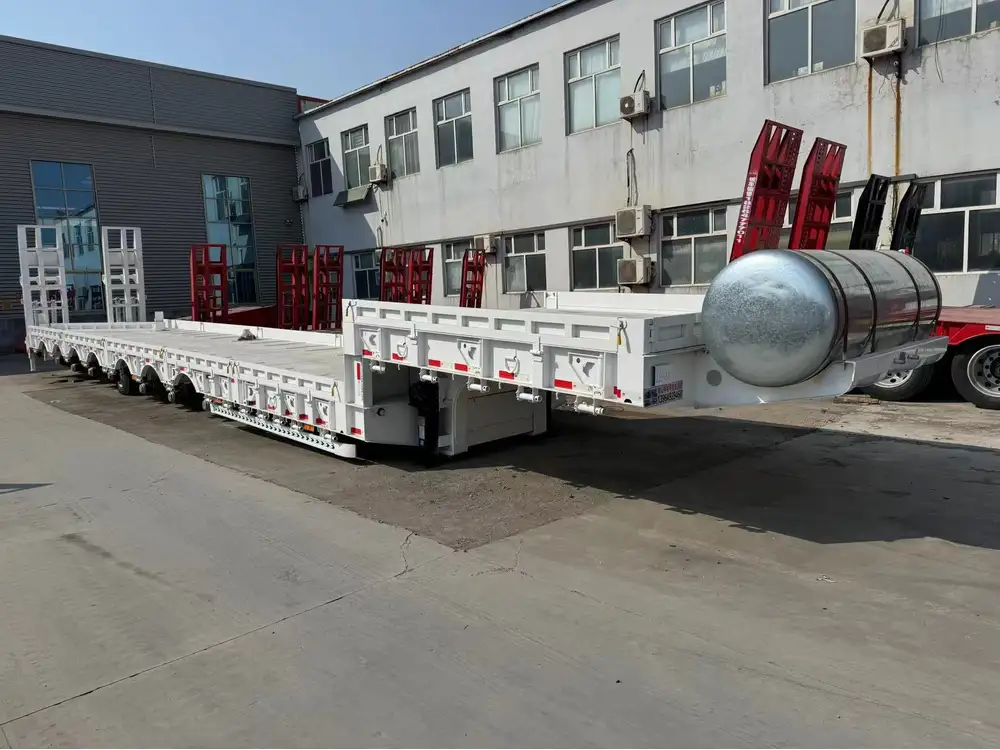When it comes to operating a semi truck, understanding its fuel capacity is crucial not only for efficient logistics and long-haul journeys but also for cost management and environmental considerations. In this comprehensive guide, we will explore the intricacies of semi truck fuel tanks in detail, addressing common queries and providing insights that are pertinent for operators, fleet managers, and industry enthusiasts alike.
Overview of Semi Truck Fuel Tanks
Fuel capacity in semi trucks varies widely depending on the type and model of the truck, as well as its intended use. Typically, the holding capacity can range from 100 to 300 gallons. This variance is influenced by several factors:
| Truck Type | Typical Fuel Capacity |
|---|---|
| Day Cab (Short Haul) | 100 – 150 gallons |
| Sleeper Cab (Long Haul) | 150 – 300 gallons |
| Heavy-Duty Trucks | 200 – 300 gallons |
Key Factors Influencing Fuel Capacity
Type of Transport: Trucks designed for long-haul routes often have larger fuel tanks compared to day cabs, allowing for increased travel distance without refueling.
Weight Regulations: Different jurisdictions have regulations on maximum vehicle weights which can impact how much fuel a truck can carry. Heavier loads may mean less fuel capacity to comply with weight restrictions.
Manufacturer Variability: Different manufacturers design trucks with varying specifications. Some brands are known for providing larger fuel tanks, catering to specific segments of the transportation market.
Customization: Many owners opt for customized fuel tanks, increasing the standard capacity to meet their operational needs.

A Deeper Dive into Fuel Tank Variations
Standard Configurations
Most common fuel tank configurations for semi trucks are single tank and dual tank systems. Here’s how they compare:
| Configuration | Description | Advantages | Disadvantages |
|---|---|---|---|
| Single Tank | One tank usually installed on one side. | Simplicity, lighter overall weight. | Limited fuel capacity, can necessitate more frequent fill-ups. |
| Dual Tank | Two tanks, often placed on both sides of the truck. | Increased capacity, allows for longer distances. | More complex system, heavier, may require specialized installation. |
Fuel Tank Materials
The materials used for fuel tanks also influence their overall capacity and durability:
- Aluminum Tanks: Lightweight and corrosion-resistant. They are commonly found in long-haul trucks due to weight savings.
- Steel Tanks: More durable and less expensive but heavier, impacting payload capacity.
- Polyethylene Tanks: Increasingly popular for their resistance to corrosion and lightweight nature, though they may have lower durability compared to metal tanks.

Understanding Fuel Efficiency and Tank Size
The relationship between fuel tank size and fuel efficiency is a critical consideration for truck operators. A larger tank doesn’t directly equate to higher efficiency, but rather enables longer journeys, which can reduce costs in terms of time and money:
- Average Fuel Consumption: On average, a semi truck consumes about 6 to 8 miles per gallon. Depending on the tank size, the range of miles covered can be substantial:
| Fuel Tank Size (gallons) | Estimated Range (miles) |
|---|---|
| 100 | 600 – 800 |
| 150 | 900 – 1200 |
| 300 | 1800 – 2400 |
Impacts of Fuel Tank Size on Operations
Long-Haul Efficiency: Larger tanks reduce the frequency of stops, which is pivotal for long-haul operations that aim for efficiency in time management.
Cost Consideration: While larger tanks incur a higher up-front cost, the ability to carry more fuel often leads to long-term savings by reducing fuel stop frequencies.
Strategic Planning: Operators must strategically plan routes based on fuel capacity and consumption, ensuring minimal downtime for refueling.
Fuel Storage and Environmental Considerations
Proper management and storage of fuel not only ensure operational efficiency but also minimize environmental impacts. Fuel spillage and leaks are significant concerns, especially when dealing with large quantities. Implementing best practices in storage and transport can mitigate these risks.
Regular Inspections: Semi truck fuel tanks should undergo regular inspections to identify any signs of wear or leaks early.
Fuel Management Systems: Implementing fuel management systems can track consumption and detect discrepancies, reducing the chance of spills.
Compliance with Regulations: Adhering to environmental regulations pertaining to fuel storage is essential, including spill response plans and proper documentation.

Frequently Asked Questions
How Many Gallons Does a Semi Truck Hold?
Most semi trucks typically hold 100 to 300 gallons, depending on model and configuration.
Can You Customize a Semi Truck Fuel Tank?
Yes, customization is common. Fleet owners often opt for larger tanks to maximize range for specific routes.

What Are the Benefits of a Dual Tank System?
A dual tank system allows for greater fuel capacity, extending the driving range without the need for frequent fuel stops, which is beneficial for long-haul operations.
How Much Does the Weight of Fuel Impact Load Capacity?
Fuel weight significantly contributes to the overall weight of the truck. Therefore, operators must consider the weight of the fuel when determining how much cargo they can carry to comply with weight regulations.
Conclusion: The Importance of Choosing the Right Fuel Capacity
In summary, understanding the fuel capacity of semi trucks is vital for efficient operations in the freight transport industry. The choice between different tank sizes, configurations, and materials can have sweeping implications on cost efficiency and operational effectiveness. By making informed decisions about fuel capacity, transport operators can better navigate the complexities of logistics and enhance their overall productivity.
For potential buyers, fleet managers, and operators, investing time in evaluating fuel capacity features aids in optimizing logistics, controlling costs, and promoting sustainable transportation practices.
Understanding fuel capacity not only informs purchasing decisions but also enhances operational strategy across the board. Whether you manage a single truck or an entire fleet, leveraging knowledge about fuel capacity can pave the way for more efficient, economical, and environmentally friendly practices in the trucking industry.



